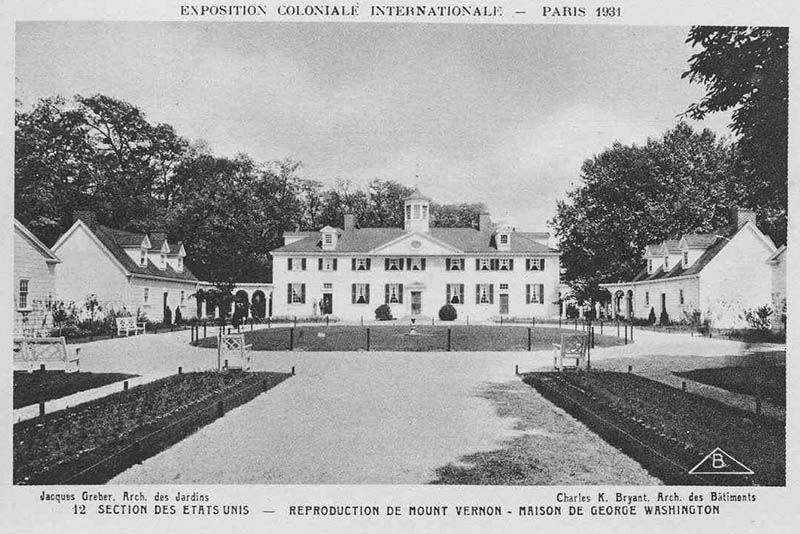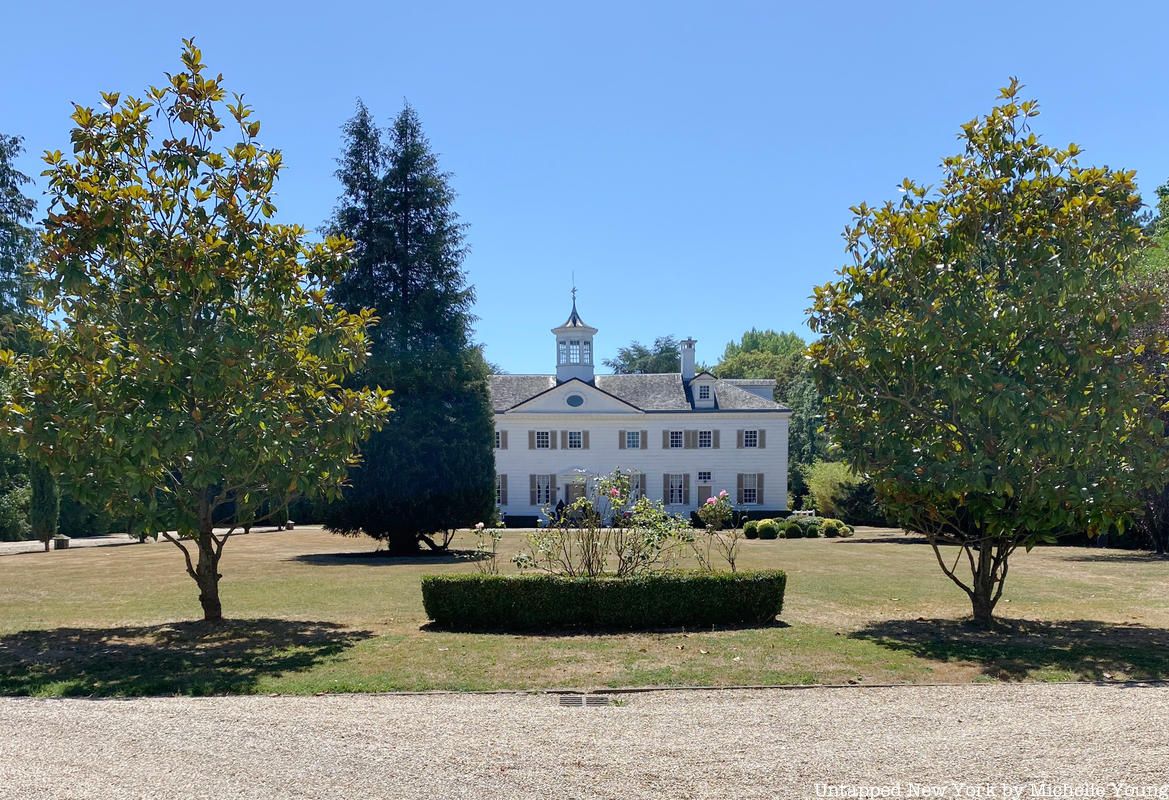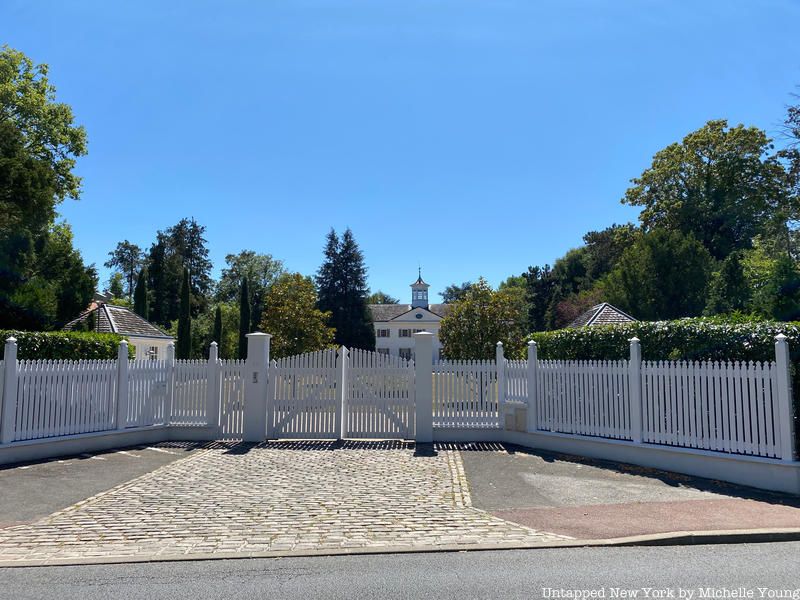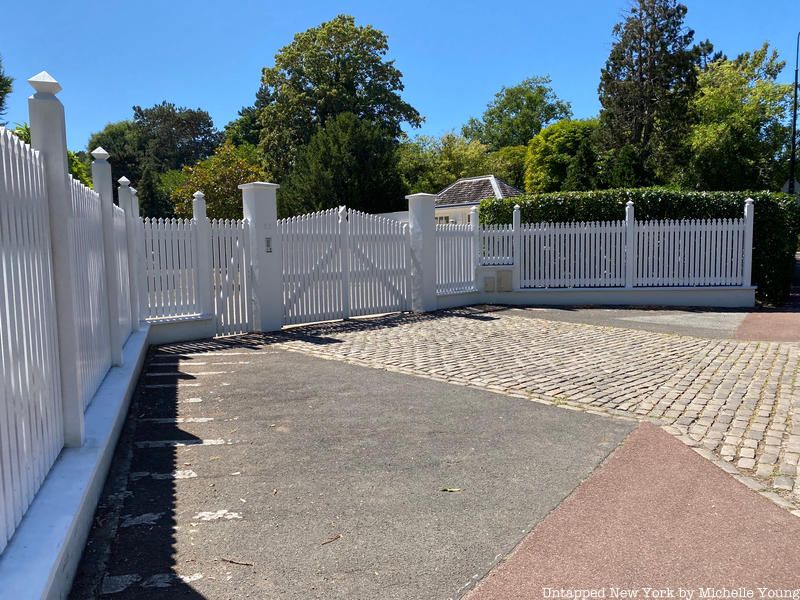100th Anniversary Great Nave Tour at the Cathedral of St. John the Divine
Celebrate the 1925 construction of the stunning nave inside the world's largest Gothic cathedral!


It may come as a surprise, but about thirty minutes east of Paris and five miles from Versailles sits an exact replica of Mount Vernon, the colonial home of George Washington. How and why it got to the village of Vaucresson on the edge of the famous golf club of Saint-Cloud is a story of Franco-American friendship that goes back several centuries.
The democratic republican principles of France were much admired by America’s founding fathers, including Thomas Jefferson, Benjamin Franklin, John Adams, and George Washington. Following the Marquis de Lafayette‘s military support of the nascent rebellion in America, Lafayette and Washington became lifelong friends. So much so that Lafayette named one of his sons George Washington de La Fayette. During the French Revolution, Washington welcomed the young Lafayette named after him on breaks from Harvard at the Presidential home in Philadelphia and in Mount Vernon. George Washington de La Fayette would also return to Mount Vernon on his father’s tour through America from 1824 to 1825.

Postcard of Mount Vernon from 1931 Colonial Exposition in Paris. Image in public domain in France.
The Mount Vernon outside Paris was built as the American pavilion for the 1931 Colonial Exposition in Paris that took place in the Bois de Vincennes. It was one of six Mount Vernons that were created for various world’s fairs between 1893 and 1934. The Paris version was produced by Sears, Roebuck & Co., certified as an exact replica by the American government, and is the only one built for a world’s fair that still remains. The grounds for the exposition were designed by landscape architect Jacques Greber, born and trained in Paris but created many gardens in the United States for both private and public clients.
Both within the country and as produced for export abroad, Mount Vernon first represented the ideals of the young nation (slaves withstanding — Washington freed his slaves upon his death but his wife Martha did not) — and then later the country’s industrialism and ingenuity. Lydia Mattice Brandt, who published the book First in the Homes of His Countrymen: George Washington’s Mount Vernon in the American Imagination says that Mount Vernon has been reproduced more times than any other historic building in America. Brandt tells Lapham Quarterly that the years around the Colonial Exposition in Paris was the peak of the frenzy over Mount Vernon.

The Replica of Mount Vernon in Prospect Park. Image from Brooklyn Historical Society via Prospect Park Alliance
New Yorkers may recall that a Sears replica of Mount Vernon also appeared in Prospect Park in 1932 to mark the 200th anniversary of Washington’s birth. The architect for both Brooklyn and Paris’ Mount Vernons was Charles K. Bryant, who had first designed a replica of Washington’s home in 1915 for the San Francisco World’s Fair. Although America was in the throes of the Great Depression, President Herbert Hoover and the U.S. Congress decided the United States would participate in the 1931 Colonial Exposition in Paris, and put in $250,000 towards the construction of the U.S. pavilion. Sited in the Bois de Vincennes on Lake Daumesnil, the Paris Mount Vernon was meant to evoke the landscape of the original along the Potomac River.
To be an exact replica meant that even the materials had to be the same, so the Paris Mount Vernon was also made of red cedar like the original. The cupola and the asymmetric window placement on the front facade, which were the results of extensions and additions done by Washington on the original house were also retained on the replica. The colonnaded back facade, oft-imitated in American suburban architecture, was also included. The interiors were duplicated exactly and filled with authentic or authentically recreated items, including a cane owned by Benjamin Franklin, a sword of George Washington, and a key of the Bastille that Lafayette presented to Washington. Being in France, the bedroom Lafayette stayed in when he returned to the United States was given special attention.

Originally only within reach of the rich, living in Mount Vernon became an affordable, mass-produced possibility when Sears, Roebuck, & Co. offered a mail-order, pre-fabricated option following the popularity of the pavilion at the 1931 Colonial Exposition. Like the versions for the world’s fairs, it arrived in pre-marked, numbered pieces and could be put together in two weeks.
The Mount Vernon at the Paris Colonial Exposition was initially intended to be deconstructed, packed up, and shipped to Chicago’s World Fair. But, it was likely more cost effective to simply construct and ship a new Mount Vernon there. So, an American surgeon living in Paris named Alexander Bruno purchased the house and had it moved to Vaucresson. The adjoining buildings and colonnades, which were included in the pre-fabricated design, are no longer standing on the property. The New York Times reports that “their inclusion in the original ‘footprint’ means that a future owner could add a 1,150-square-meter annex,” however.

The Paris Mount Vernon was then purchased by French industrialist Marcel Dessault whose company produced airplanes used in World War II. After he survived internment in the appalling Buchenwald concentration camp, he returned to the company, moved it to Vélizy-Villacoublay and purchased Mount Vernon which was located nearby for entertaining guests, said to have included John and Jackie Kennedy.

Over time, the interior of the house has been altered to create larger bedrooms and living spaces. The exterior, listed as a historic landmark in France, cannot be changed. Since Dessault, it has had several owners including the screenwriter Catherine Tavernier who restored it in 2000 and redesigned the interior. It was for up sale in 2013 for $20 million Euros and again in 2019. It has been maintained in impeccable condition and a visit today reveals well-manicured gardens and a pristinely painted exterior. A cobblestone entranceway turns into a gravel driveway that pulls up in front of the house. A very American-esque white picket fence separates the property from the road, reminding any enterprising visitor that this Mount Vernon is very much private property despite its very public provenance. Until its next sale, the home will likely stay in relative obscurity, very much like how the French like it.
Next, check out 10 lost or never built structures in Prospect Park, including Mount Vernon.
Subscribe to our newsletter